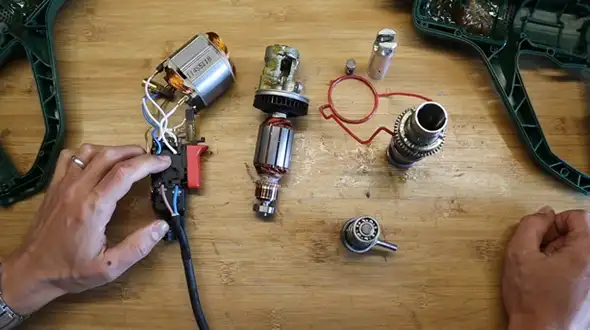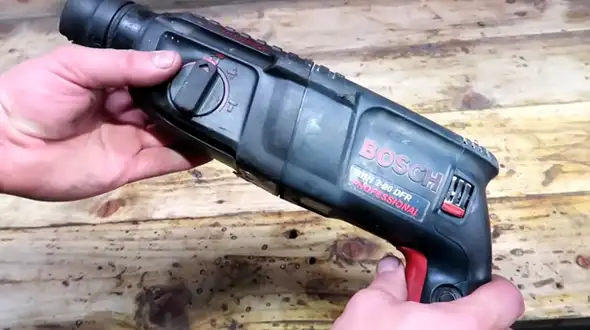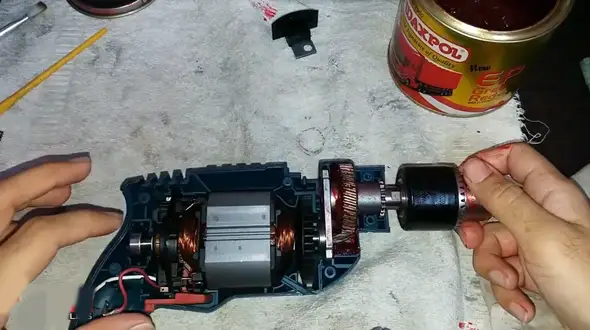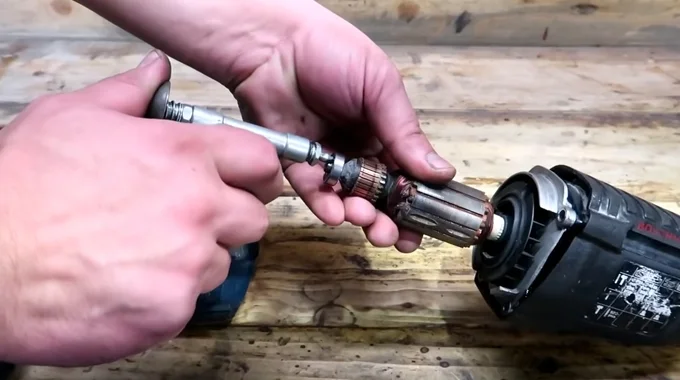Last Updated on August 3, 2022
Imagine your Bosch drilling machine moving parts that get worn and torn. Many people face this issue very often. Not maintaining your hammer drill tool regularly might bring out such issues.
It’s not unusual for a hammer drill to get gummed up with grease and dirt, especially if it’s used frequently. If your hammer drill feels sluggish or less powerful, it might be time to do some cleaning.
Fortunately, greasing a Bosch hammer drill is a relatively simple process that only takes a few minutes. With just a little regular maintenance and greasing your power tool, you can keep your Bosch rotary hammer drill running like new. Here’s how to grease a bosch hammer drill.
How to Grease a Bosch Hammer Drill Simple Steps?

Step 01: Turn off the hammer drill: First, turn off the drilling machine, unplug it from the power source, and remove the bit. Specifically, the reason it is a dangerous machine is that it generates a great deal of force, so it is very easy to lose control and injure a person.
Therefore, making sure the drill is turned off before attempting to grease it is crucial. By doing so, you will ensure that the job is done properly and prevent accidents.
Step 02: Locate the grease port: Before you can grease a Bosch hammer drill, you need to find its grease port first. It is located on the side of the tool, just below the trigger. To access it, simply remove the side panel. Once the panel is removed, you will see a small hole that leads to the port for greasing.
Step 03: Get a can of lubricant: When choosing a lubricant, consider the type of material you will be working with. For example, if you are planning on using the drill on concrete or stone, you will need a lubricant that can withstand high temperatures. With so many options on the market, choosing the right lubricant for your needs can seem daunting.
Step 04: Remove the chuck: Chuck removal is a quick and easy process that allows one to get at the internals of the tool and give it a good once-over. To remove the chuck from the drill use an Allen wrench to rotate the chuck counterclockwise until it is loose. Once the screw is loosened, pull the chuck straight off.
Step 05: Remove the old grease: Use a putty knife or a stiff brush to take off the old grease from the drill. Insert the putty knife into the gap between the drill and the chuck. Next, twist the knife to loosen the old grease.
Remove the old layer of grease with a scraper. Or a degreaser can also be applied. This is important because you don’t want the new grease to mix with the old, which can cause it to break down prematurely.
Step 06: Apply new grease to the spindle: Use a thick layer of grease, making sure that all moving parts are well coated. When applying, be sure to use high-quality lithium-based grease. Spread an adequate amount generously. Spin the spindle around several times to spread the grease evenly.
Step 07: Apply the lubricant: Apply a thin film of lubricant to the tip of the drill bit before each use. Before, remove any debris or dirt from the drill using a brush or compressed air.
Use a small amount of lubricant to clean cloth and wipe down. Ensure to reach all of the moving parts, including the chuck, bit holder, and gears. Make sure to avoid getting any lubricant on the drill’s motor or electrical components.
Step 08: Wipe away excess lubricant: Get rid of any remaining lubricant before putting the drill back together. A few quick swipes with a rag should be enough to remove any excess grease.
Try using a clean, dry cloth. Gently wipe the area around the grease fittings until all of the extra greases have been removed. You don’t want this getting on your clothes or skin.
Step 09: Reattach the chuck: It is necessary to reattach it to the body of the drill, once you have greased it. This can be done by aligning the markings on the chuck with those on the machine of the drill before screwing them together.
Screw it on tightly so that it does not come loose while you are using the drill. To reattach, use a wrench to tighten.
Step 10: Test the drill: After greasing, to ensure that it is working properly, reconnect the drill to the power source and turn it on to the lowest setting. Finally, slowly increase the speed of the drill until it reaches maximum RPM.
Hold the drill in one hand and start it. Slowly bring it into contact with a piece of wood or metal. If everything is fine, the drill should operate smoothly and without any issues.
Pre-Working Guidelines

When working with a hammer drill, the first step is to ensure the bit is the correct size and type for the material you are drilling into. If the bit is too small, it can overheat and break, while a bit that is too large can damage the material or make the drill slip.
Be sure to keep the surrounding area of the drill clean and free, to prevent a fire hazard. Always unplug the drill before changing bits or making any adjustments.
Why You Should Grease Your Bosch Hammer Drill?

Not only Bosch power tools, but it also applies to all your hand tools, chisel, and any other tool bearings that must be maintained regularly. Otherwise, your rotary hammer drill parts could be compromised.
Without proper lubrication, the gears can become damaged, and the drill will not function as efficiently. To prolong its lifespan and prevent costly repairs greasing the Bosch hammer drill regularly will help. Make sure that you use the correct type of grease.
Consult your user manual or speak with a Bosch representative before greasing your drill. The Hammer drill becomes dry, causing the drill to work less efficiently. In addition, if the gears are not properly greased, they generate a lot of friction, which can lead to overheating and, eventually, breakage.
Safety Precautions to Avoid Injury
You should follow some basic safety measures to prevent injury. Always wear eye protection and gloves to protect yourself from flying debris. Make sure that the area around you is clear of any obstacles that could trip you up or get in the way of your drill. Finally, keep your fingers away from the chuck while the drill is running, as it is a dangerous area.
By following these simple safety tips, you can help to ensure that your hammer drilling experience is safe and successful.
FAQs (Frequently Asked Questions)
1. Do Hammer Drills Need Grease?
Keep your hammer drill well-maintained in order to prevent wear and tear on the bits as well as the drill itself. One way to do this is to regularly lubricate the drill with grease. Overheating of the drill is prevented by reducing friction and heat build-up. Many people choose to use lithium grease, as it is specifically designed for high-temperature applications. Any type of general-purpose grease will work. Simply apply some grease to the chuck before each use.
2. How Do You Lubricate a Drill?
An extension cord is designed to connect to a drill that has a chuck attached, which holds a drill bit. Make sure that there are no bits in the chuck after you place a few drops of oil lubricant. If you want to achieve an even distribution of lubricant, re-open and re-close the chuck five times. Use a soft cloth to wipe any excess lubricants off the surface.
3. Can You Use a Rotary Hammer to Break Concrete?
When it comes to breaking through concrete, a rotary hammer can be a great solution. With its combination of rotating and pounding action, it can quickly break through thick concrete surfaces. However, there are some drawbacks to using a rotary hammer for this purpose. One problem is that the rotating action can cause the concrete to shatter, making it difficult to remove all of the debris.
In addition, the pounding action of the rotary hammer can create a lot of dust, which can be dangerous to breathe in. As a result, it is important to take precautions when using concrete breakers, such as wearing a dust mask and safety goggles.
Conclusion
Any questions about how to grease a Bosch hammer drill, be sure to consult your owner’s manual or contact a qualified technician. By following the steps in this guide, you can easily grease Bosch hammer drills. Take advantage of a high-quality lubricant designed for use on tools to get the best results.
For more information on how to properly care for your tools. If you have anything to know more or share with us, drop it in the comments section below. Thanks for reading.



